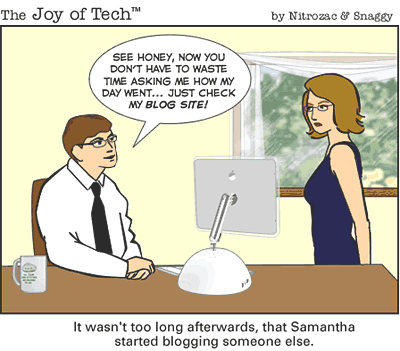Social Network Service

A social network service is social software specifically focused on the building and verifying of online social networks for whatever purpose. Many social networking services are also blog hosting services. As of 2005, there are over three hundred known social networking web sites.
Social networks connect people with all different types of interests, and one area that is expanding in the use of these networks is the corporate environment. Businesses are beginning to use social networks as a means to connecting employees together and helping employees to build profiles. This makes them searchable and be connected to other business professionals. One example of a business social network is LinkedIn, a network that connects businesses by industry, functions, geography and areas of interest.
Networks are usually free for businesses or at a low cost; this is very beneficial for entrepreneurs and small businesses looking to expand their contact base. These networks act as a customer relationship management tool for companies selling products and services.
Companies can also use social networks for advertising in the form of banners and text ads. Since businesses are expanding globally, social networks make it easier to keep in touch with other contacts around the world.
Social networking sites have added a new factor to the “friends of friends” equation. By providing information about yourself and using blogs, chat rooms, email, or instant messaging, you can communicate, either within a limited community, or with the world at large. But while the sites can increase your circle of friends, they also can increase your exposure to people who have less-than-friendly intentions.
The FTC suggests these tips for socializing safely online:
* Think about how different sites work before deciding to join a site. Some sites will allow only a defined community of users to access posted content; others allow anyone and everyone to view postings.
* Think about keeping some control over the information you post. Consider restricting access to your page to a select group of people, for example, your friends from school, your club, your team, your community groups, or your family.
* Keep your information to yourself. Don’t post your full name, Social Security number, address, phone number, or bank and credit card account numbers — and don’t post other people’s information, either.
Be cautious about posting information that could be used to identify you or locate you offline. This could include the name of your school, sports team, clubs, and where you work or hang out.
* Make sure your screen name doesn’t say too much about you. Don’t use your name, your age, or your hometown. Even if you think your screen name makes you anonymous, it doesn’t take a genius to combine clues to figure out who you are and where you can be found.
* Post only information that you are comfortable with others seeing — and knowing — about you. Many people can see your page, including your parents, your teachers, the police, the college you might want to apply to next year, or the job you might want to apply for in five years.
* Remember that once you post information online, you can’t take it back. Even if you delete the information from a site, older versions exist on other people’s computers.
* Consider not posting your photo. It can be altered and broadcast in ways you may not be happy about. If you do post one, ask yourself whether it’s one your mom would display in the living room.
* Flirting with strangers online could have serious consequences. Because some people lie about who they really are, you never really know who you’re dealing with.
* Be wary if a new online friend wants to meet you in person. Before you decide to meet someone, do your research: Ask whether any of your friends know the person, and see what background you can dig up through online search engines. If you decide to meet them, be smart about it: Meet in a public place, during the day, with friends you trust. Tell an adult or a responsible sibling where you’re going, and when you expect to be back.
* Trust your gut if you have suspicions. If you feel threatened by someone or uncomfortable because of something online, tell an adult you trust and report it to the police and the social networking site. You could end up preventing someone else from becoming a victim.
Social Networking Conference January 15-16, 2007 Miami, USA







